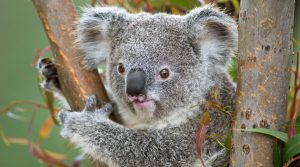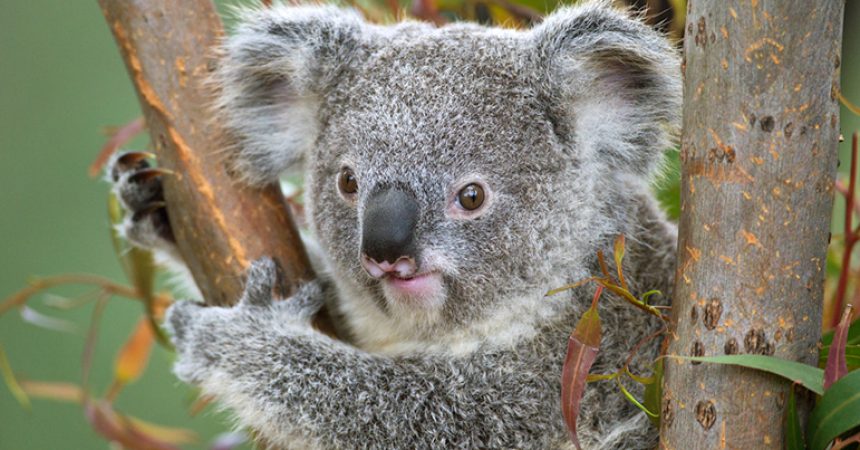Zoo InternQuest is a seven-week career exploration program for San Diego County high school juniors and seniors. Students have the unique opportunity to meet professionals working for the San Diego Zoo, Safari Park, and Institute for Conservation Research, learn about their jobs, and then blog about their experience online. Follow their adventures here on the Zoo’s website!
 This week, interns met with the energetic Lisa Townsend, an Educator at the San Diego Zoo. Prior to her current job, Ms. Townsend was a koala zoo keeper. She now works with the Koala Education Conservation Program to help inform the public about koalas and protect their habitat.
This week, interns met with the energetic Lisa Townsend, an Educator at the San Diego Zoo. Prior to her current job, Ms. Townsend was a koala zoo keeper. She now works with the Koala Education Conservation Program to help inform the public about koalas and protect their habitat.
The San Diego Zoo owns 67 koalas, which is the largest collection outside of Australia. The Zoo actively contributes to the Blue Mountains Koala Project which is a research project located in Australia’s Blue Mountains National Park. The Blue Mountains are Australia’s equivalent to the Grand Canyon, but filled with eucalyptus trees and koalas. In the 1920s, koala hunting in the Blue Mountains became popular, and farmers started clearing eucalyptus trees for agriculture. Koalas suffered habitat loss and population decline, and were ultimately listed as a threatened species. Koalas were not seen in the Blue Mountains until about ten years ago when people started to report sightings. When a brush fire in 2013 left koala remains in its wake, researchers were now even more sure that koalas had returned to the Blue Mountains.
So how does Ms. Townsend play a role in all this koala conservation? Well, the Australian government wanted to purchase land in the Blue Mountain range to utilize for agriculture. However, not wanting to completely decimate the koala population, they turned to conservation researchers, including Ms. Townsend, to find out how koalas were using the land and which trees they were using the most. So, Ms. Townsend packed her bags and headed to the Land Down Under for a 15 day koala expedition!
Ms. Townsend and the rest of the team were in the Australian bush for 11 days searching for koalas. The hunt for a 30-pound koala in a forest of 200-foot tall eucalyptus trees was like looking for a needle in a haystack. Ms. Townsend trekked through all sorts of unfamiliar terrain from steep hillsides and rocky crags to four-foot high brush and thorny vines. And don’t forget the biting ants and enormous spiders! They worked from dusk to dawn looking for any signs of koala activity like scat and scratch marks on the eucalyptus trees. They even had a dog, named Badger, who was trained to sniff out koala scat and bark up the tree that the waste was beneath. Once Badger narrowed the possible trees down, it was up to the scientists to scour the tree with binoculars in search of a koala.
Spotting a koala was a huge excitement for Ms. Townsend and the rest of the team. They usually only saw one or two koalas in a day; if any at all! Once a koala was located, a tree climber scaled an adjacent tree and waved a yellow flag over the koala’s head to encourage it to move downwards. Koala’s main predators are birds of prey so anything flying over their heads entices them to move toward the ground to safety. On the ground, the researchers put the koala in a bag to restrict their movement and keep them calm. They outfit them with a radio collar, tag their ears with an identification number, and give them an overall body check. The radio collars stay on the koala for a year collecting information about where the koalas spend most of their time and their interactions with other koalas. Upon release, the koalas slowly moved back up their tree with no signs of stress and even stopped to make eye contact with the researchers a couple times before they climbed out of sight!
Ms. Townsend loved her trip to the outback. She loved the Blue Mountains and all they encompassed, comparing the region to the set of the Hunger Games with unpredictable terrain and strange sounds all around. Ms. Townsend is a steadfast believer that when people know better, they do better. She hopes that her koala research will help inform the public of koala’s plight and encourage them to help conserve koalas and their habitat. In the meantime, Ms. Townsend encourages everyone to take small actions to help reduce their carbon footprint on the planet. Never spray insecticide on plants or soil because you risk killing off beneficial bugs and plants. Make sure to use sustainable products, and always pick up trash you see on the ground.
Ms. Townsend would travel back to Australia in a heartbeat. She hopes to further the public’s education on koala conservation to protect the mighty little marsupials.
Jillian, Real World Team
Winter Session, 2017


